
10 Lessons Marcus Aurelius Can Teach You ERIC KIM
Sculptor (s):Unknown. Description: The only remaining equestrian statue from the Roman Empire is the well-known statue of Emperor Marcus Aurelius (AD 121-180). It is not only the oldest equestrian statue in existence, but it has apparently such an aura that it has served for many centuries, and still does today, as an inspiring example of.

1.161 "Equestrian statue of Marcus Aurelius", c. 175 CE. Bronze
Illustration. by Mark Cartwright. published on 30 April 2013. Download Full Size Image. A bronze gilded statue of Roman emperor Marcus Aurelius, larger-than-lifesize and most probably erected in 176 CE and placed in Rome, perhaps in the Forum. (Capitoline Museums, Palazzo dei Conservatori, Rome).
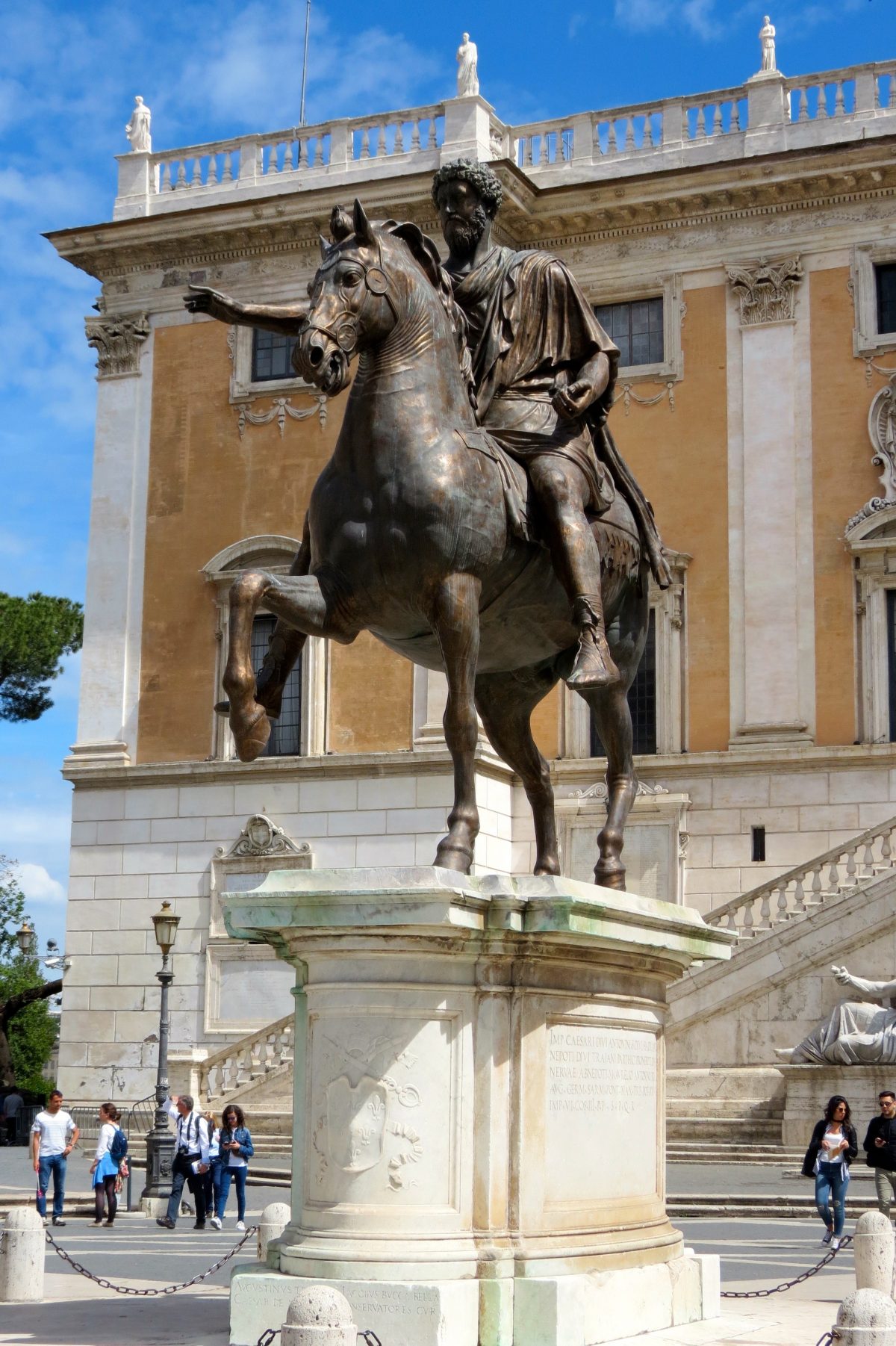
Equestrian statue of Marcus Aurelius in Rome Italy
Description. When Michelangelo redesigned the Campidoglio, a civic piazza on top of Capitoline Hill in Rome, he repositioned the ancient Equestrian Statue of Marcus Aurelius in the center of the piazza on a newly designed plinth with antique-style lettering. Just after the piazza was completed, Nicolas Beatrizet made this engraving of the statue and plinth as part of a series of prints of.
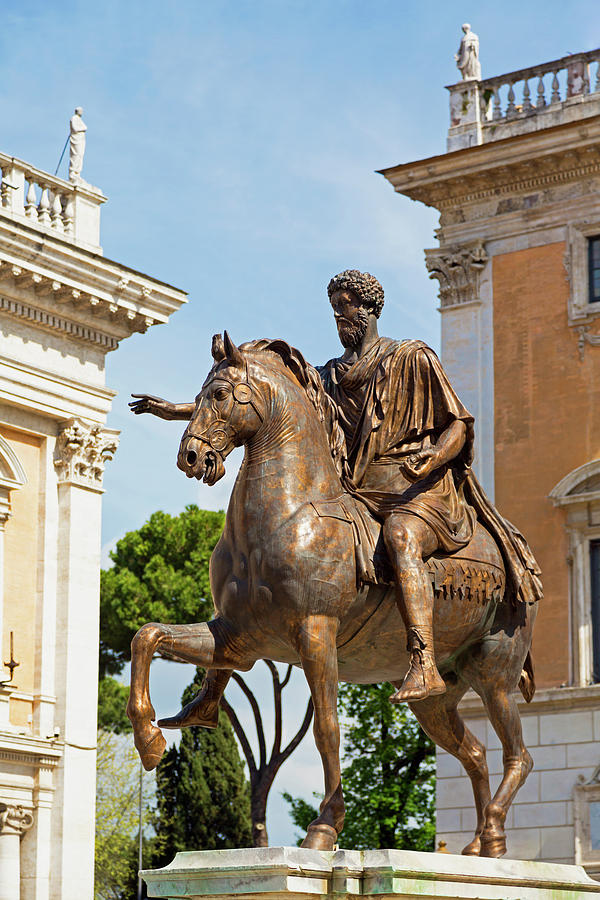
Rome, Italy. Statue Of Marcus Aurelius Photograph by Ken Welsh Fine
Illustration. by Carole Raddato. published on 18 March 2014. Download Full Size Image. The Equestrian Statue of Marcus Aurelius is an ancient Roman statue in gilded bronze. The statue was erected in 175 CE. Its original location is debated: the Roman Forum and Piazza Colonna have been proposed. (Capitoline Museums, Palazzo dei Conservatori, Rome)

Equestrian Statue of Marcus Aurelius in Rome Stock Photo Image of
Bronze gilded statue of Marcus Aurelius, larger-than-lifesize and most probably erected in 175 AD and placed in Rome, perhaps in the Forum, Musei Capitolini, Rome (8487805719).jpg 3,230 × 4,672; 8.94 MB. Bronze statue of Marcus Aurelius in Piazza del Campidoglio by Alberto Pisa (1905).jpg 1,000 × 697; 152 KB.

Marcus Aurelius (121180 C.e.) Roman Emperor The Last Good Emperor Of
A Fortunate Case of Mistaken Identity! In the centre of Piazza del Campidoglio stands the equestrian statue of Emperor Marcus Aurelius (r. 161-180). The s tatue is a copy; the original is on display in the neighbouring Musei Capitolini (Capitoline Museums). Originally gilded, the statue may have been made after the emperor's death in 180, when.
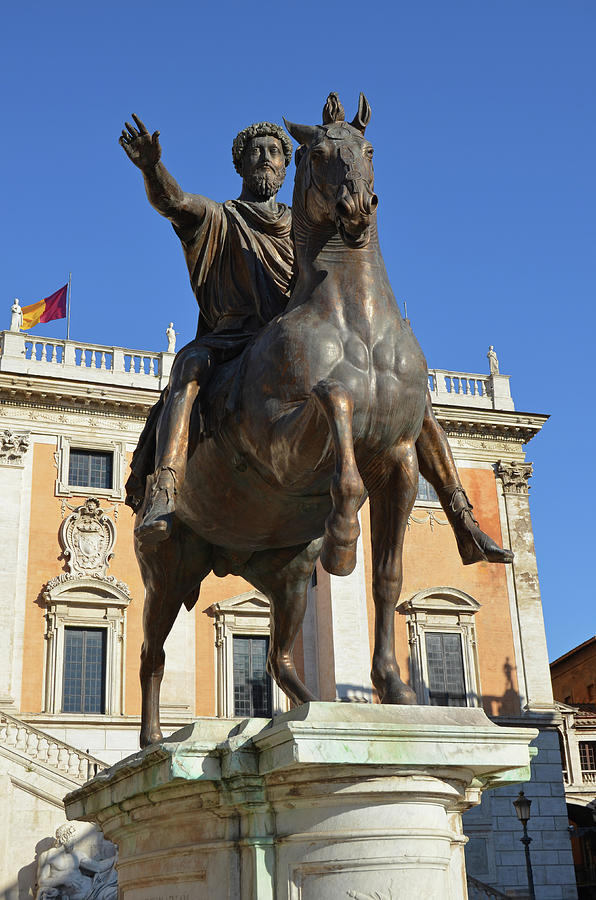
Marcus Aurelius Equestrian Statue Portrait in Piazza del Campidoglio
There is no mention of the equestrian statue dedicated to the Emperor Marcus Aurelius in ancient literary sources, but it was in all likelihood erected in 176 AD, along with numerous other honors on the occasion of his triumph over the Germanic tribes, or in 180 AD soon after his death. There were many equestrian statues in Rome at that time: late-Imperial descriptions of the areas of the city.

Marcus Aurelius. Paris, Louvre Museum Marcus aurelius, Roman emperor
Few examples of these equestrian statues survive from antiquity, however, making the Equestrian Statue of Marcus Aurelius a singular artifact of Roman antiquity, one that has borne quiet witness to the ebb and flow of the city of Rome for nearly 1,900 years. A gilded bronze monument of the 170s C.E. that was originally dedicated to the emperor.
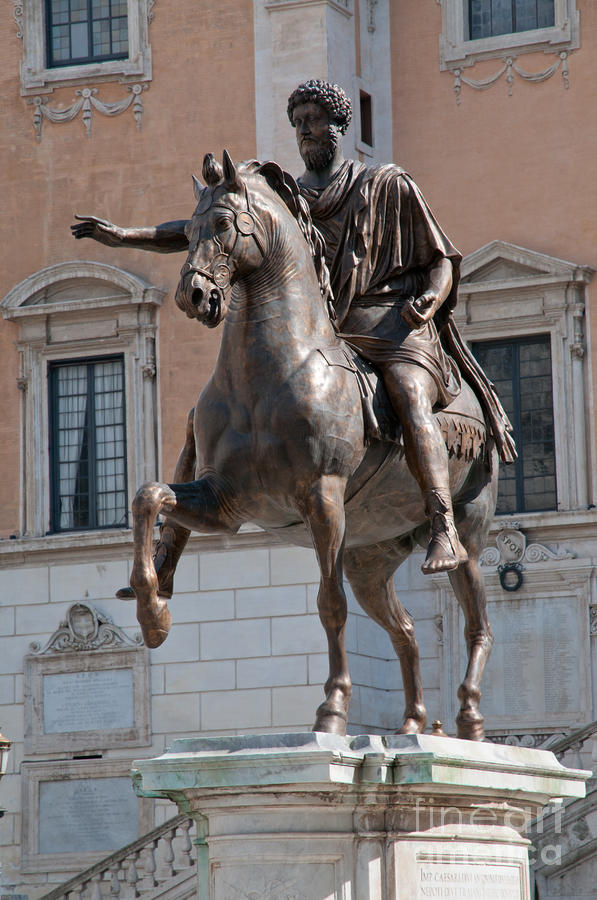
PALAZZO SENATORIO bronze equestrian statue of emporer marcus aurelius
The statues themselves were, in turn, copied in other media, including coins, for even wider distribution. Figure 5.1.10.1 5.1.10. 1: Equestrian Statue of Marcus Aurelius, c. 173-76 C.E. gilded bronze (Capitoline Museums, Rome). The original location of the sculpture is unknown. Beginning in the 8th century, it was located near the Lateran.

Equestrian statue of Marcus Aurelius. Rome, Capitoline Museums, Palazzo
The Equestrian Statue of Marcus Aurelius is an ancient Roman statue in the Capitoline Hill, Rome, Italy. It is made of bronze and stands 4.24 m tall. Although the emperor is mounted, it exhibits many similarities to standing statues of Augustus. The original is on display in the Capitoline Museums, with the one now standing in the open air of.
/equestrian-statue-of-marcus-aurelius-on-the-capitoline-hill--rome--italy-530250402-59f9369168e1a20010e29390.jpg)
Famous Quotes of Roman Emperor Marcus Aurelius
The Equestrian Statue of Marcus Aurelius is an ancient Roman equestrian statue on the Capitoline Hill, Rome, Italy. It is made of bronze and stands 4.24 m tall. Although the emperor is mounted, the sculpture otherwise exhibits many similarities to standing statues of Augustus. The original is on display in the Capitoline Museums, with the sculpture now standing in the open air at the Piazza.
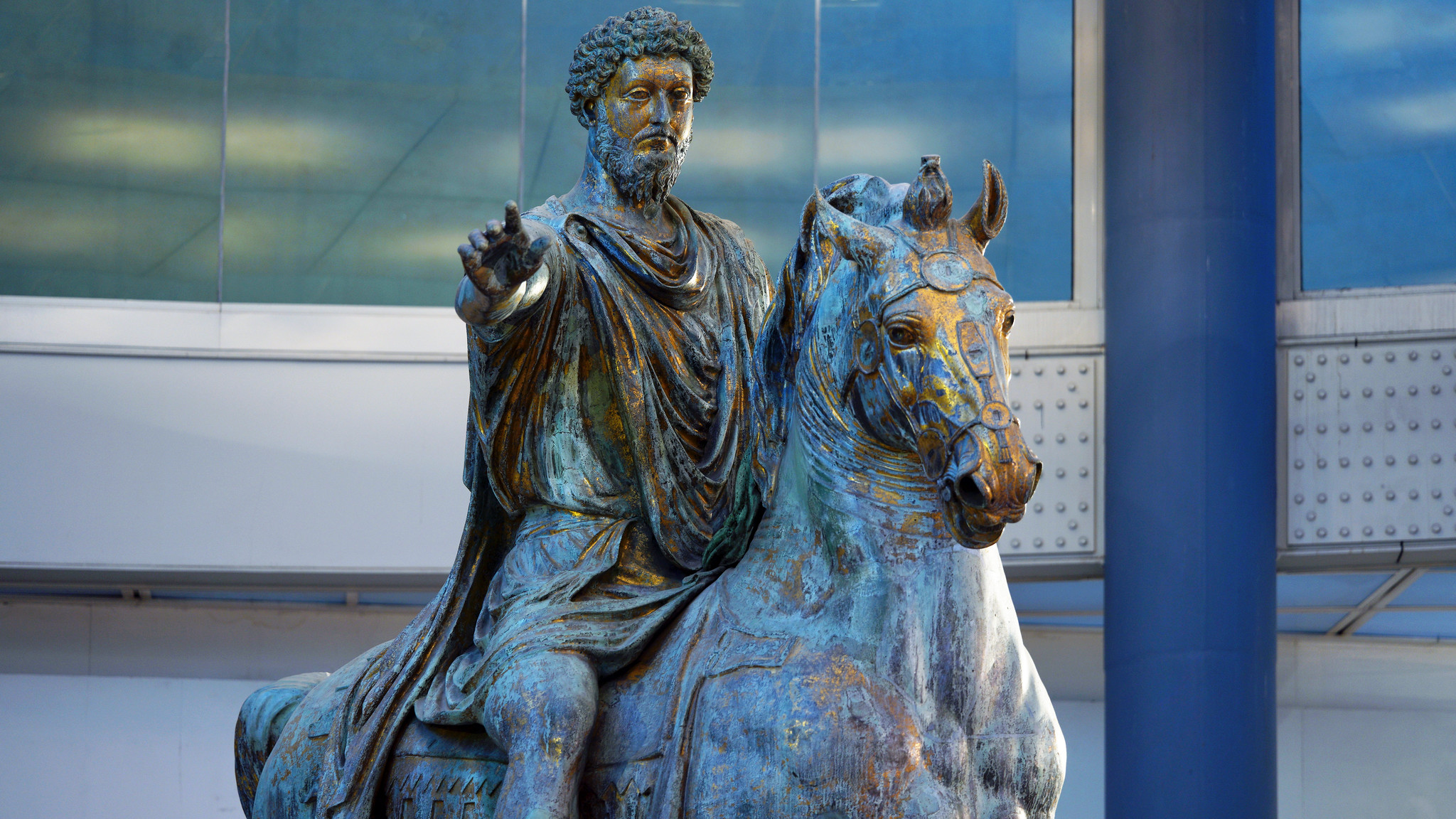
» Equestrian Sculpture of Marcus Aurelius
Equestrian Statue of Marcus Aurelius . Standing proudly in the centre of the Piazza del Campidoglio's concentric paving design, the equestrian statue of Marcus Aurelius looks down over the city of Rome. Though this statue is a replica - the original was placed inside the Capitoline Museums to preserve it - the effect is still the same.

Equestrian statue of Marcus Aurelius, from Rome, Italy, ca. 175 CE
Marcus Aurelius, also known as Mark Aurel, was a Roman emperor and philosopher who reigned from 161 to 180 AD. He is best known for his philosophical writings and is considered one of the "Five Good Emperors" of Rome. A brief introduction to the life of Marcus Aurelius is as follows. Birth, origin and family: Marcus Aurelius was born in.

Rome Marcus Aurelius Statue Stock Photo RoyaltyFree FreeImages
About. Transcript. Empire: Equestrian Sculpture of Marcus Aurelius, bronze, c. 173-76 C.E., (Capitoline Museums, Rome). The original location of the sculpture is unknown though it had been housed in the Lateran Palace since the 8th century until it was placed in the center of the Piazza del Campidoglio by Michelangelo in 1538.
FileMarcus Aurelius statue.JPG Wikimedia Commons
Equestrian Sculpture of Marcus Aurelius, gilded bronze, c. 173-76 C.E., 424 cm height (Capitoline Museums, Rome) Speakers: Dr. Steven Zucker and Dr. Beth Harris. In ancient Rome, equestrian statues of emperors would not have been uncommon sights in the city—late antique sources suggest that at least 22 of these "great horses" ( equi.
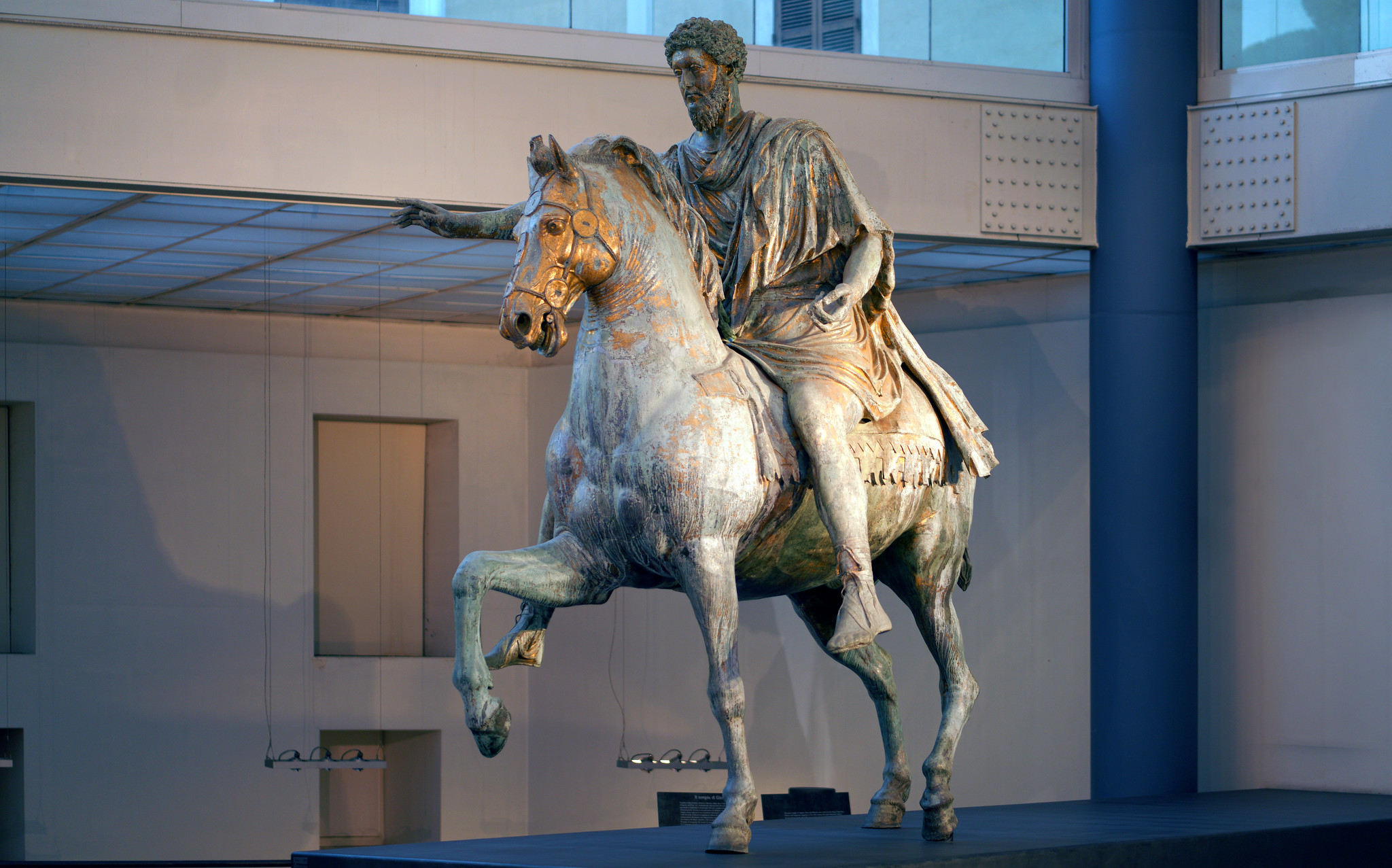
» Equestrian Sculpture of Marcus Aurelius
Marcus Aurelius statue. The bronze group of Marcus Aurelius placed on a pedestal is the beginning of the Michelangelo's intervention on the esplanade. The equestrian statue between the two palaces, built in 166 AD, thus becomes the central core of the entire architectural complex. The choice of the statue had a religious motivation as.